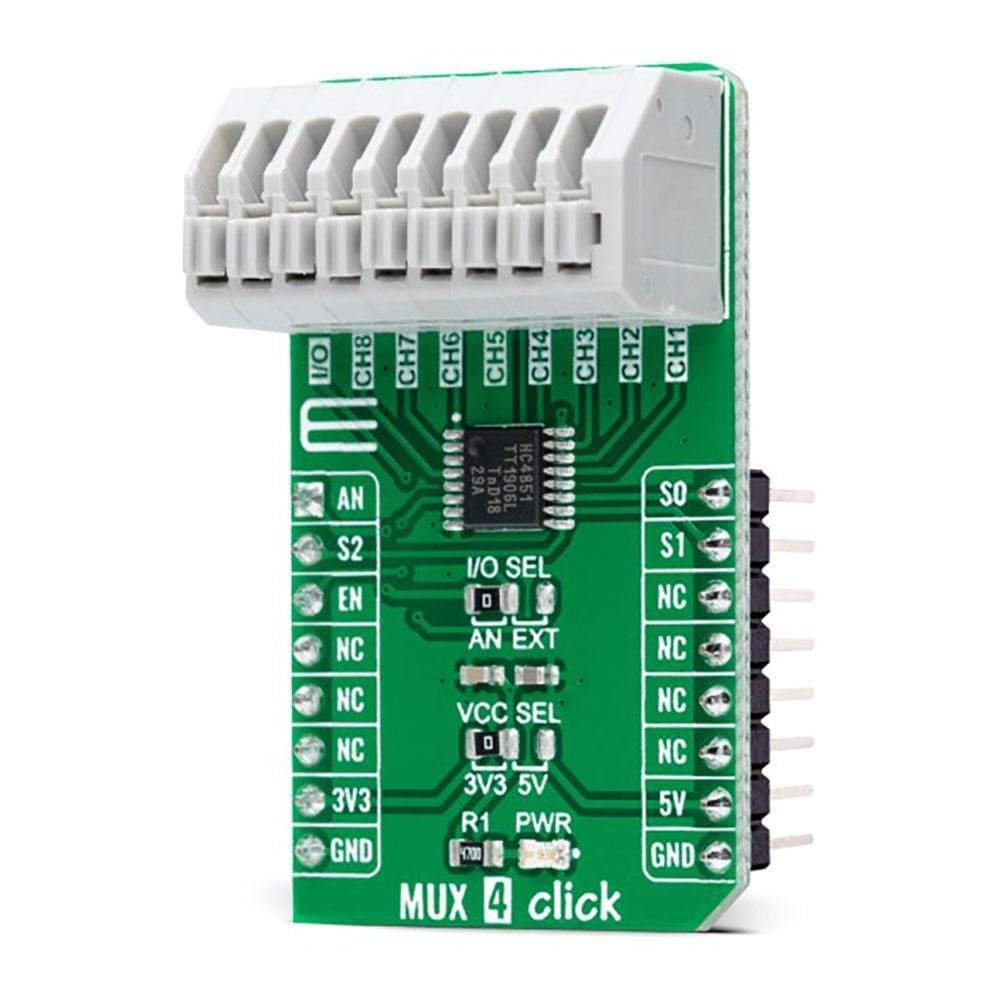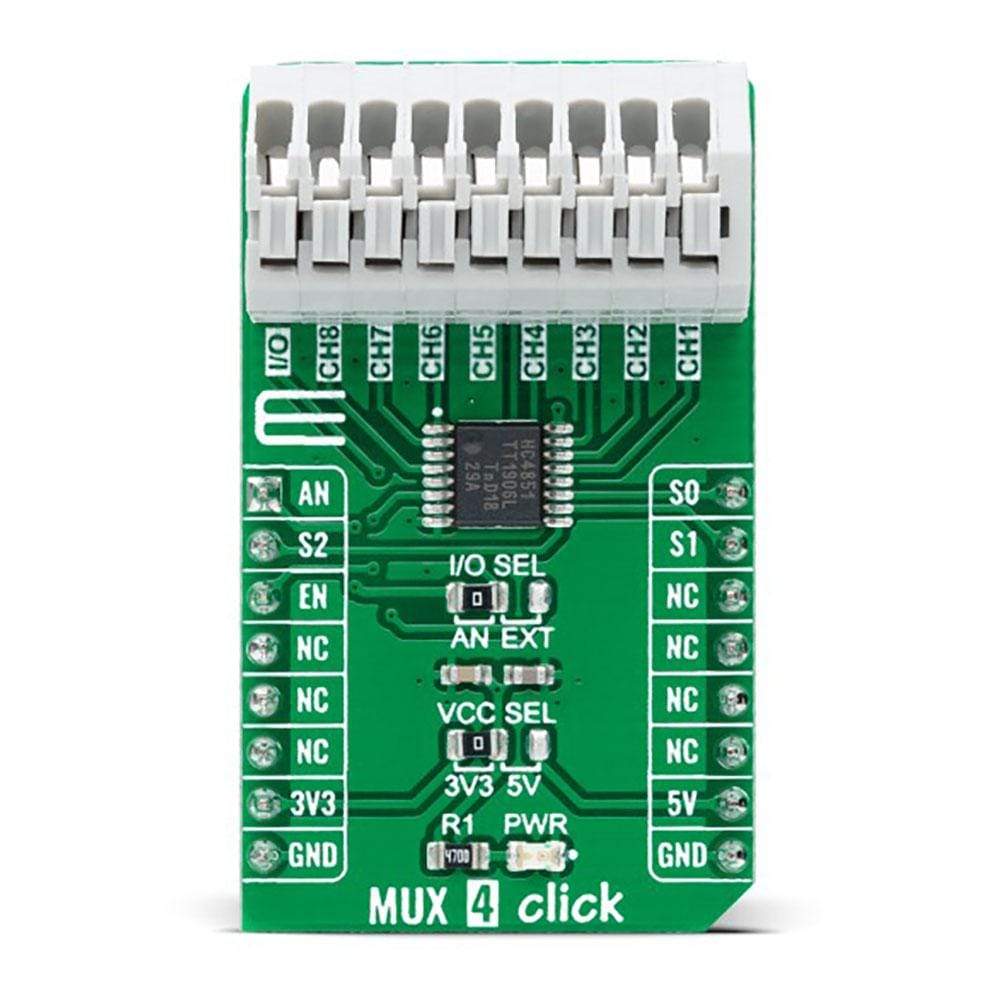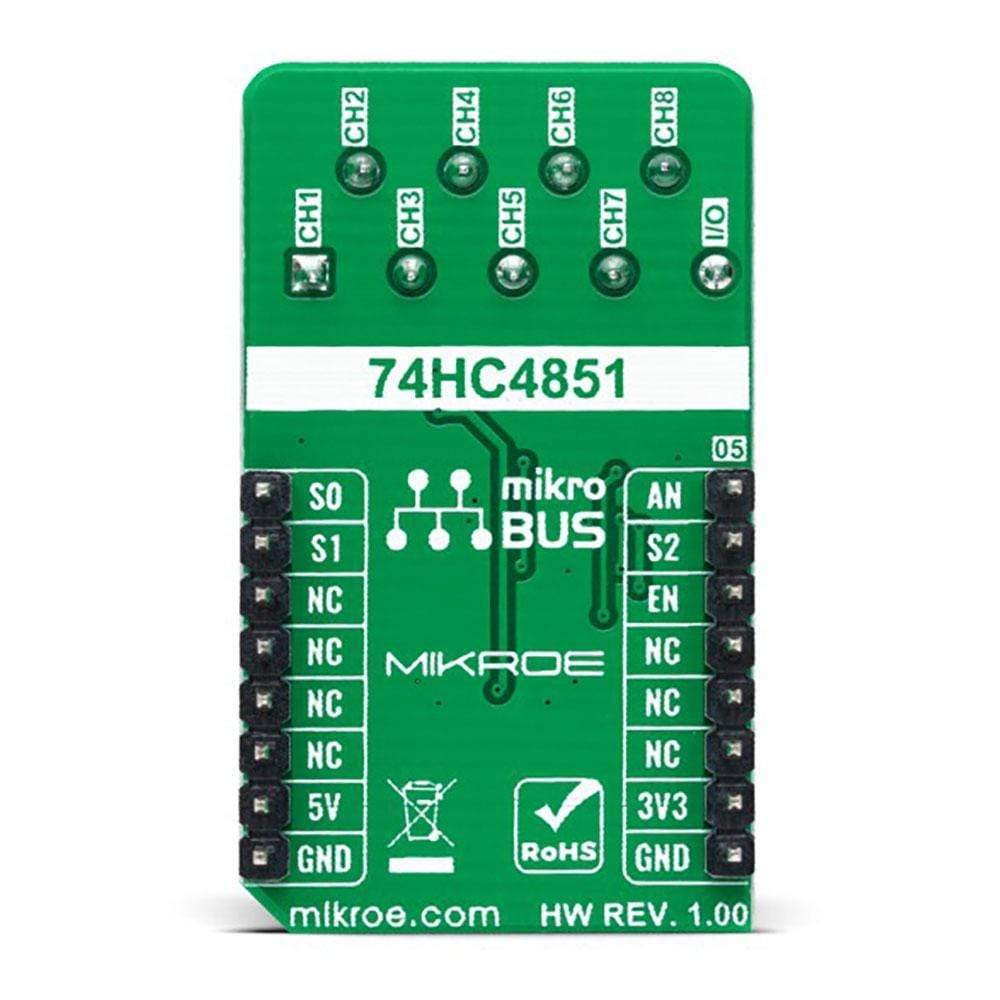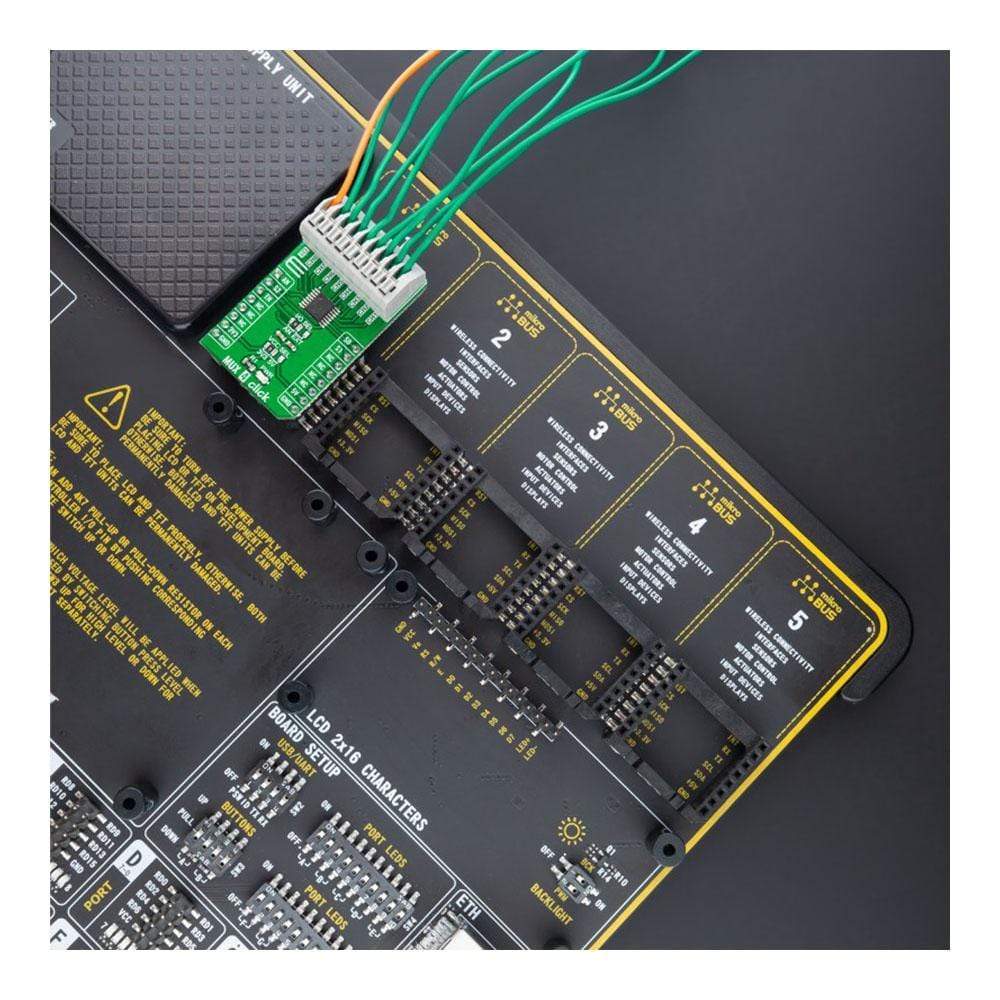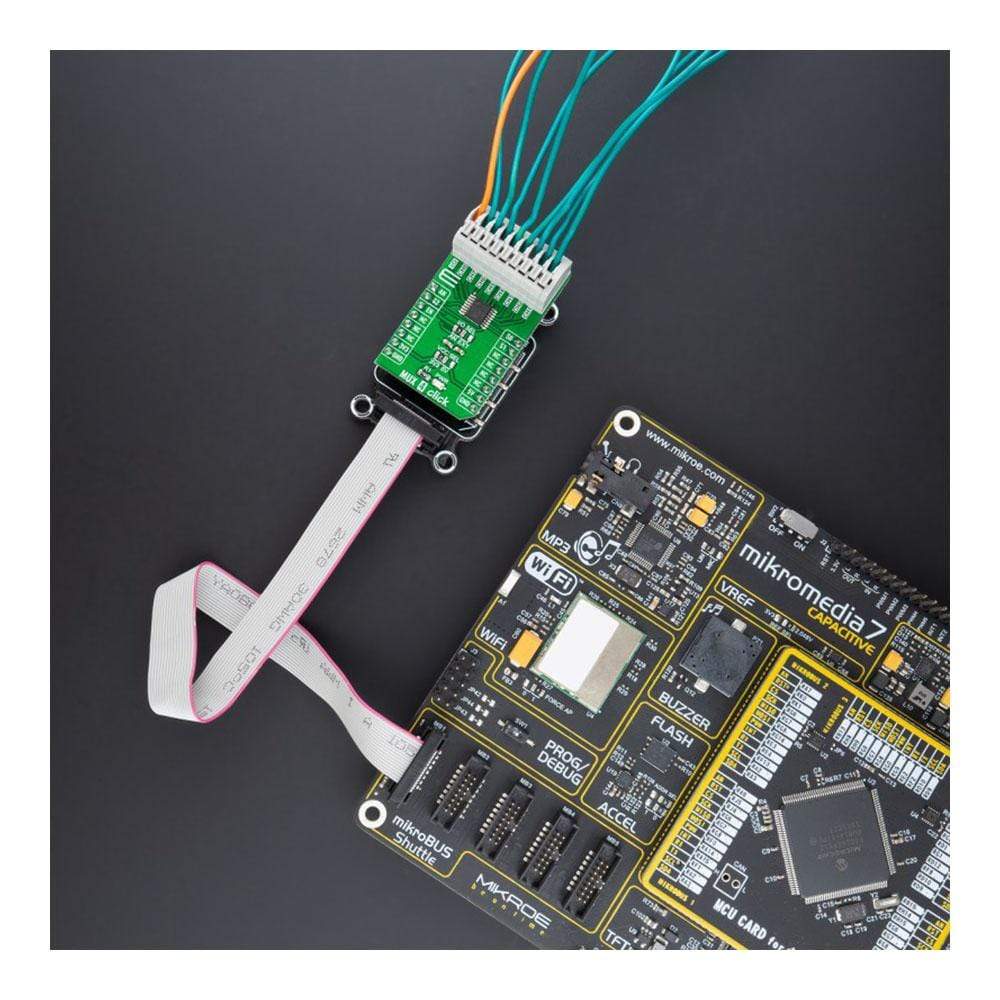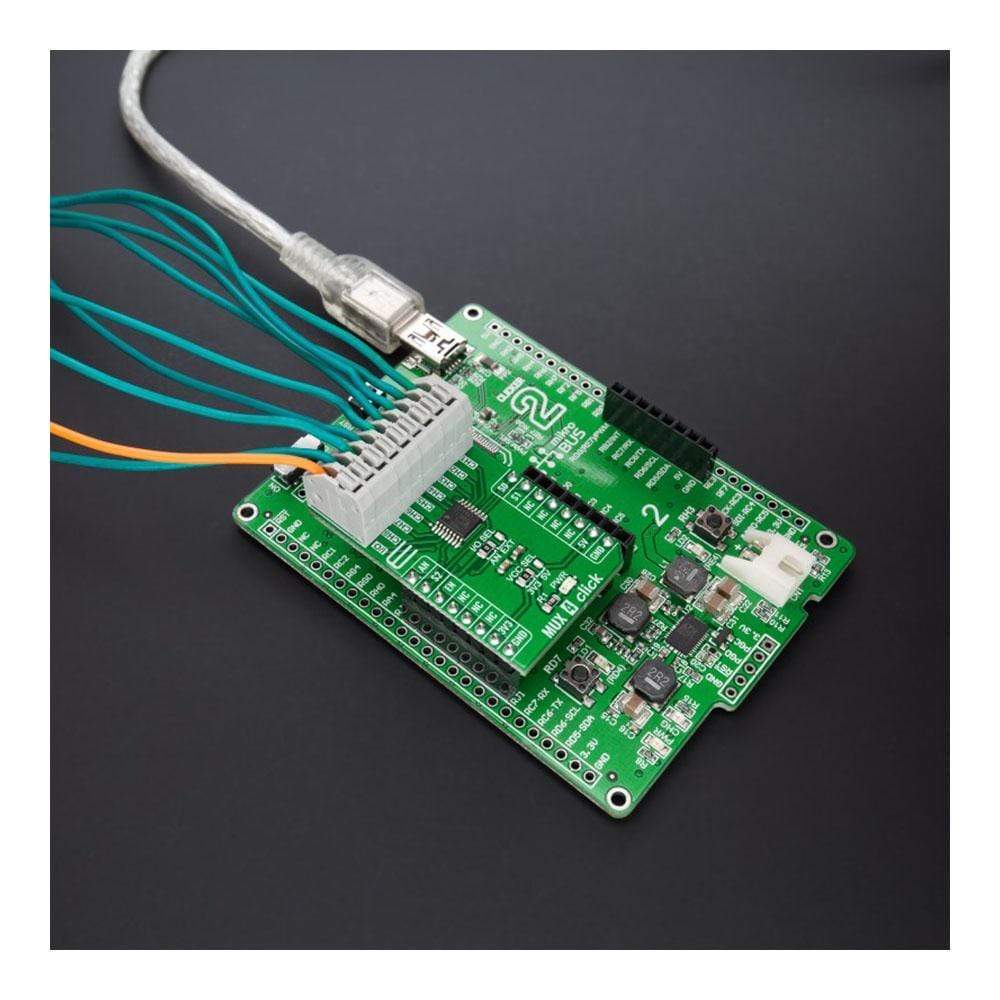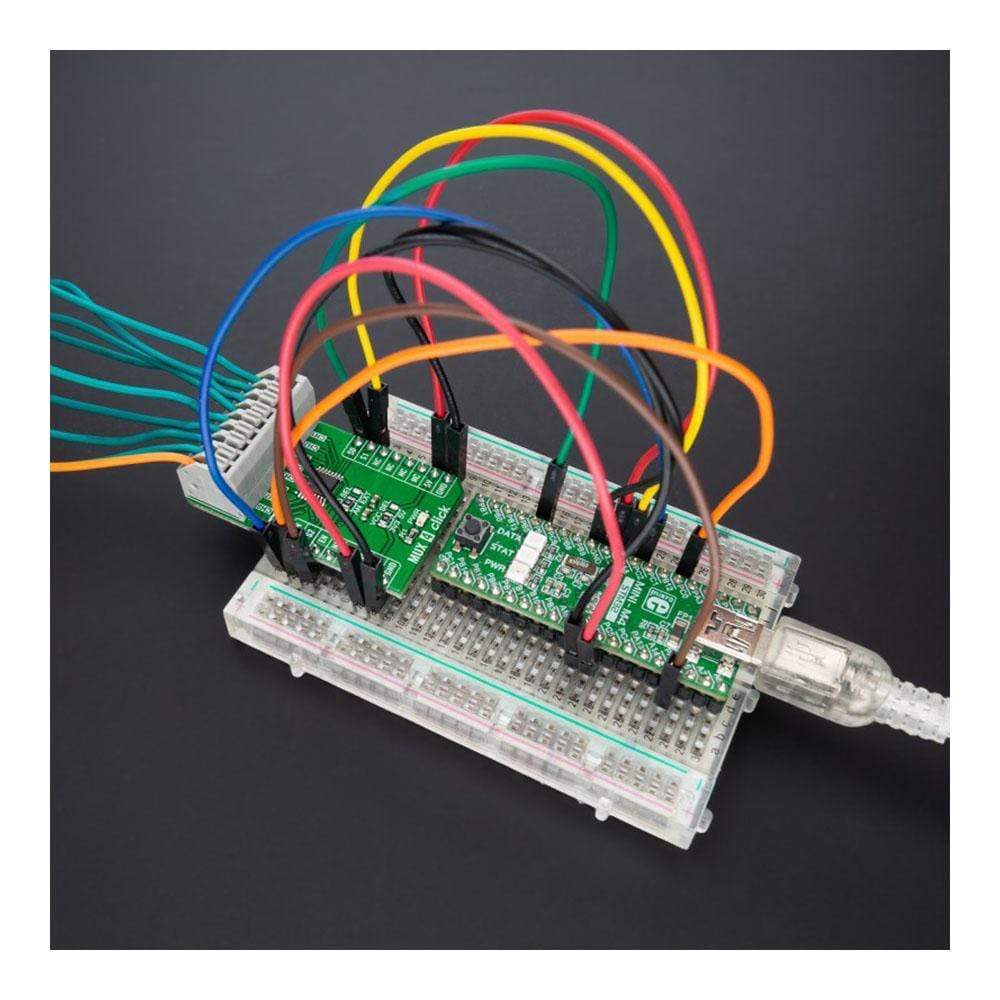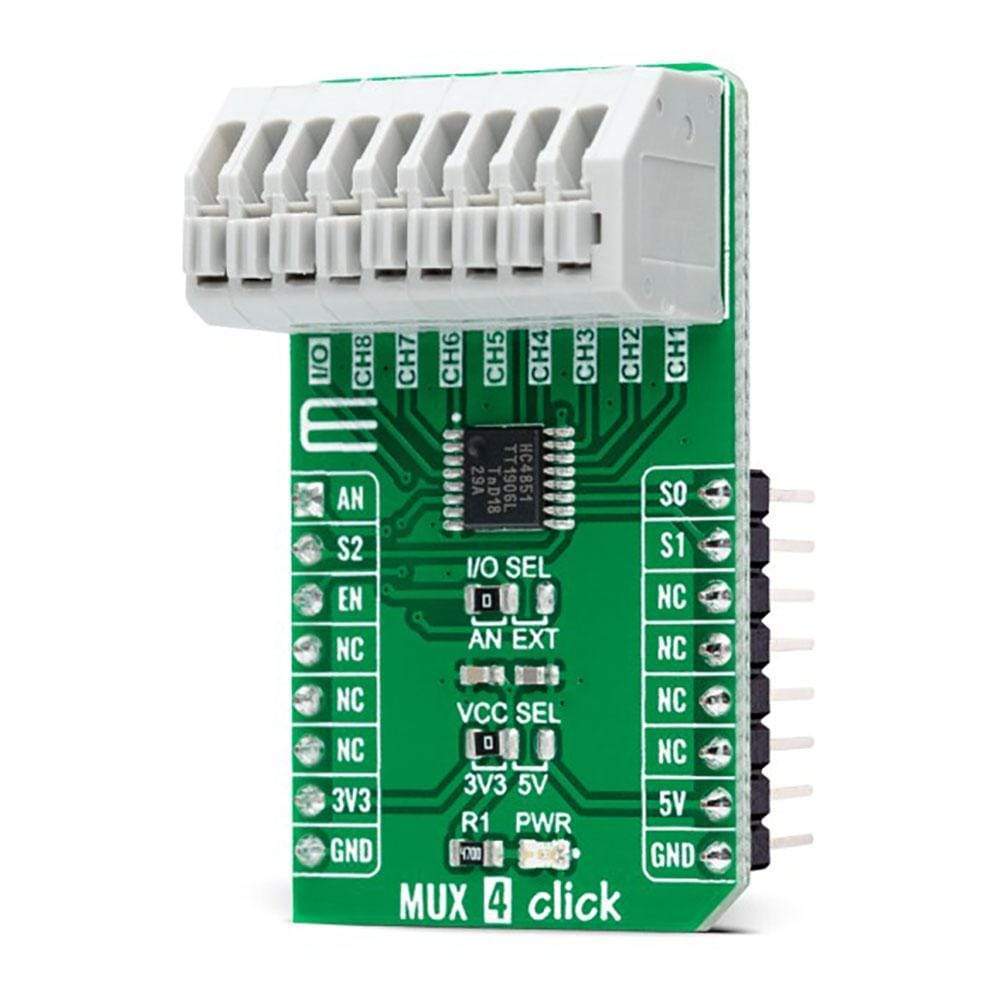
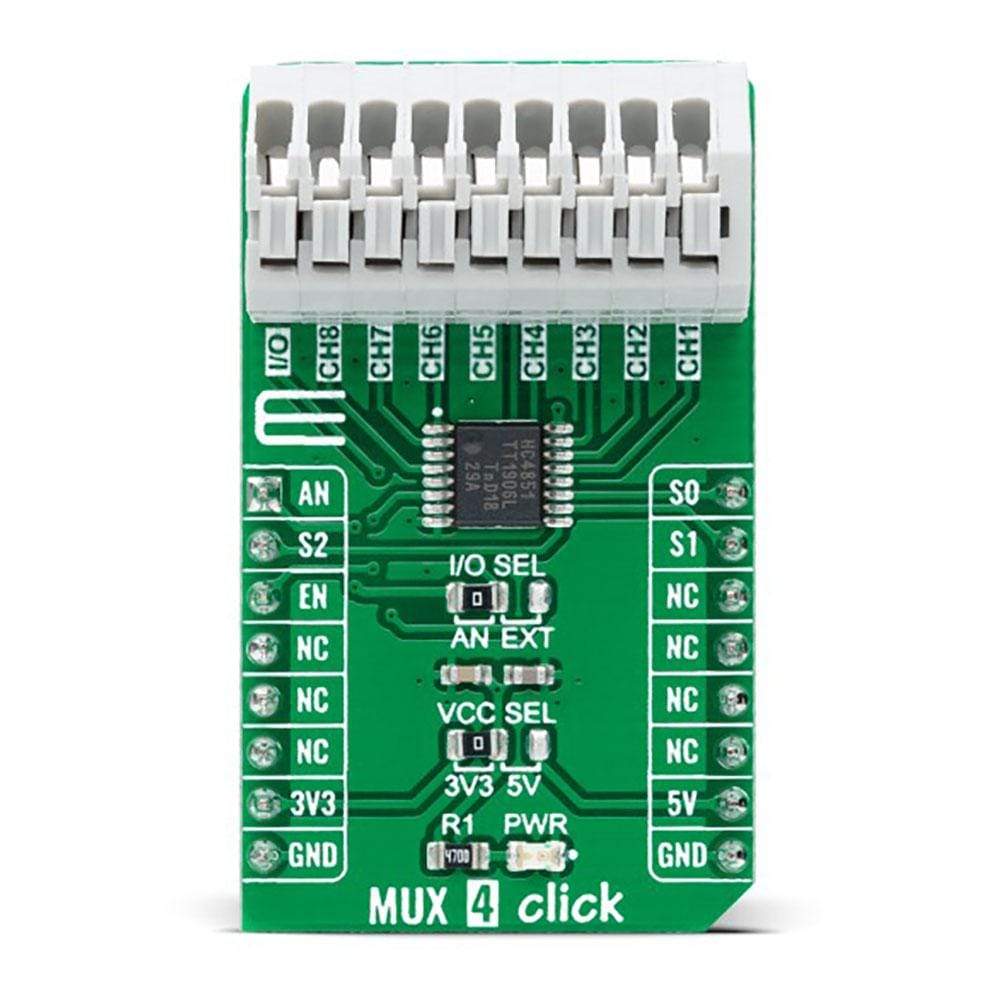
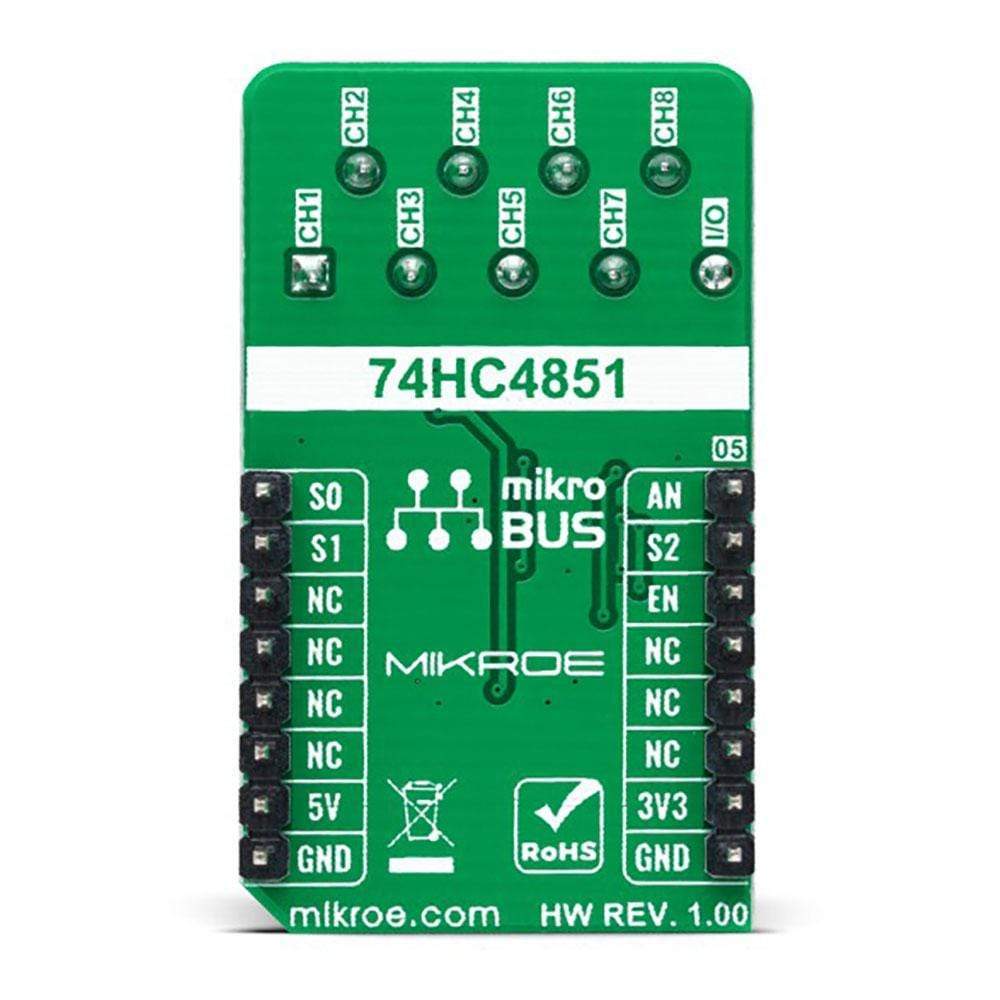
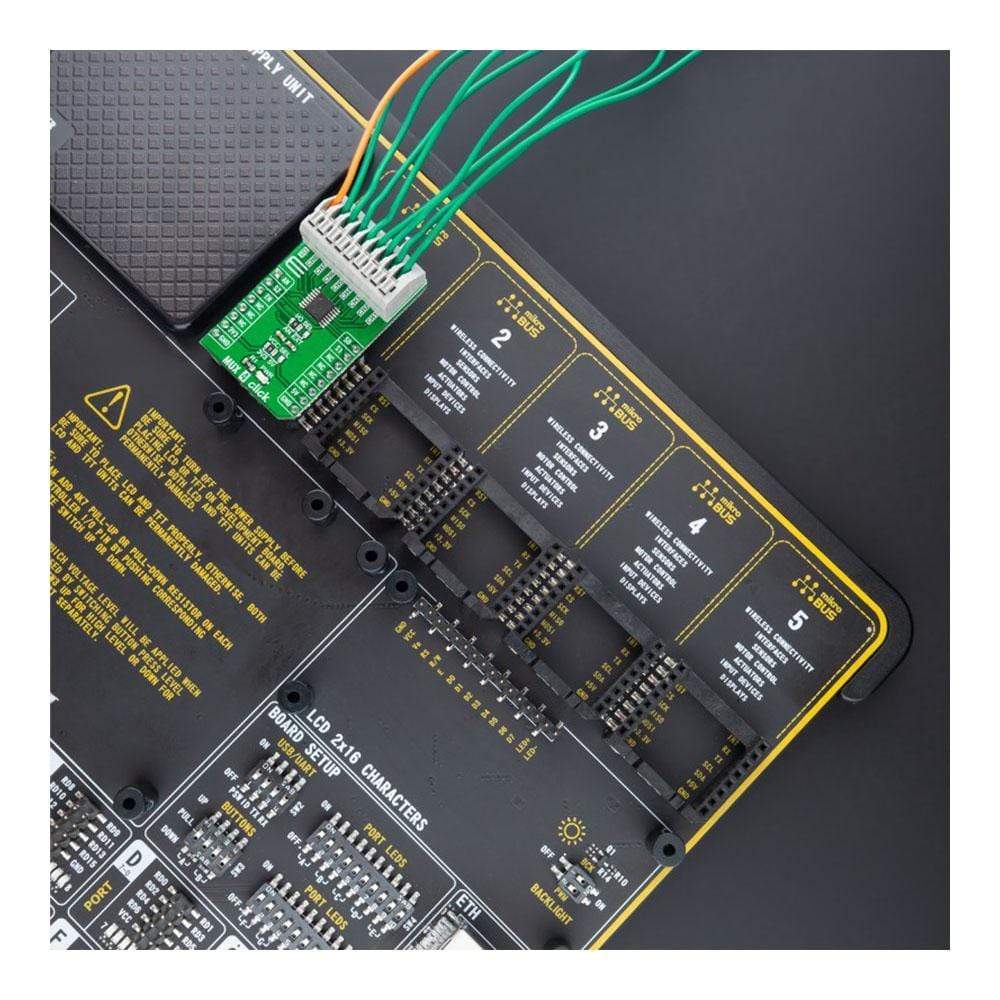
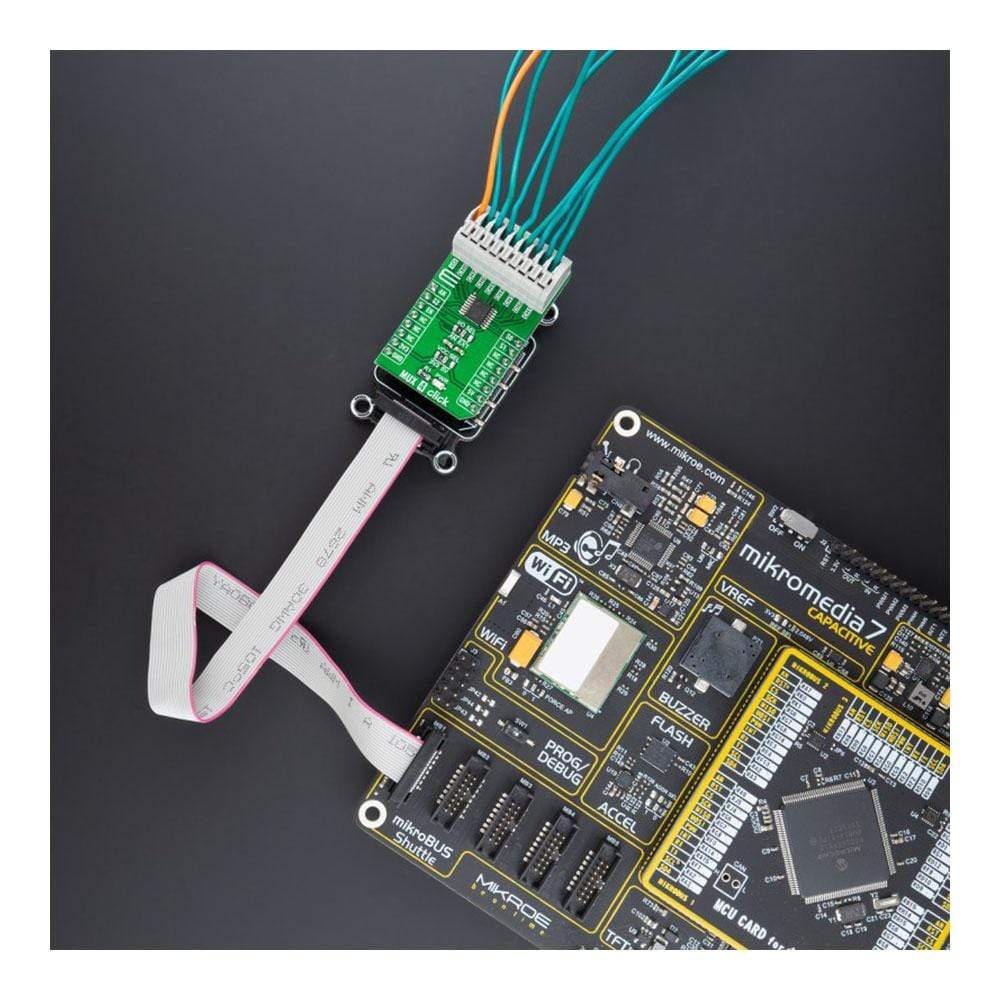
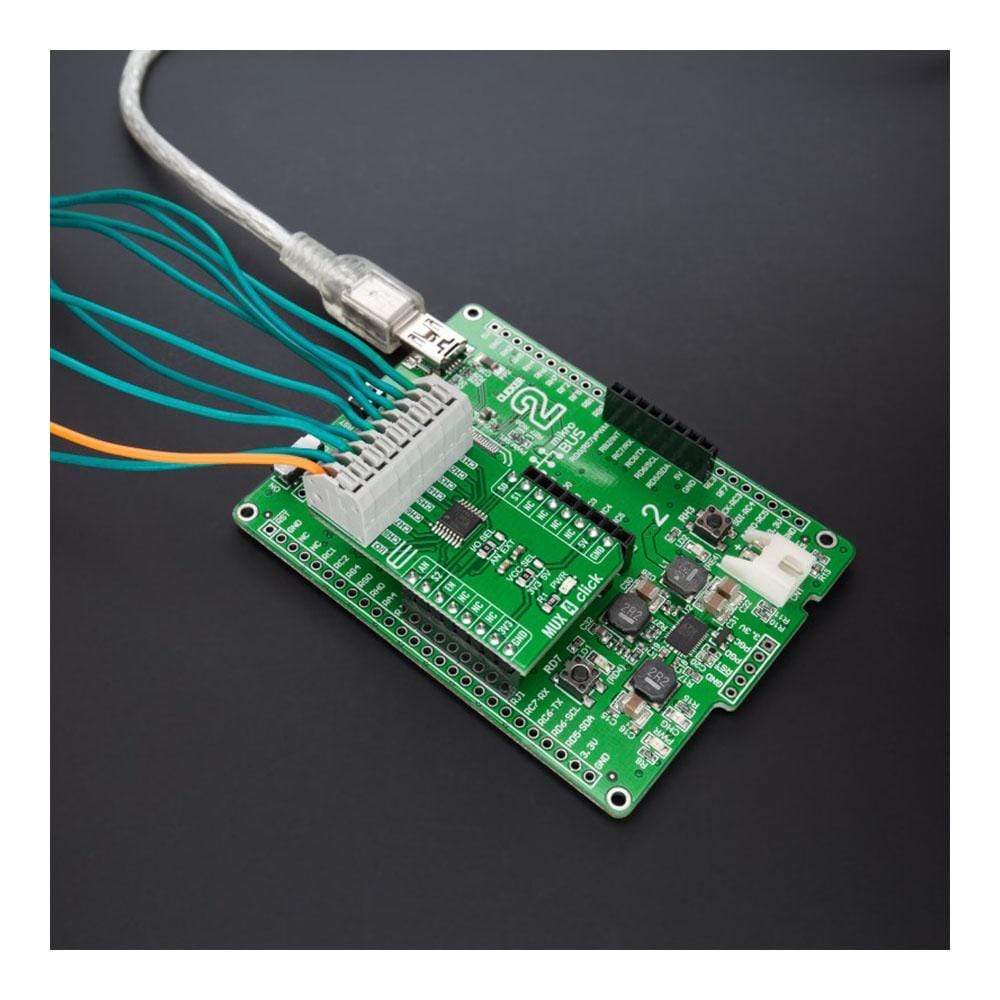
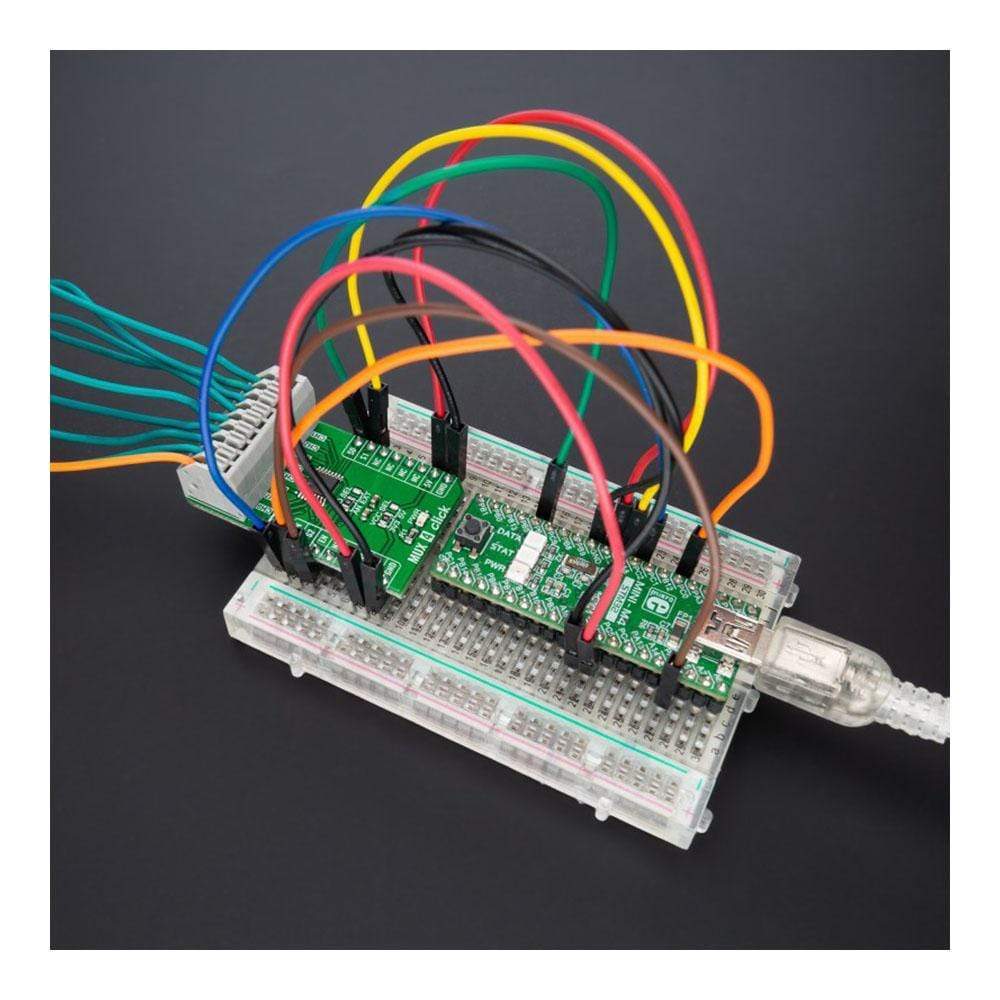
Overview
The MUX 4 Click Board™ is a compact add-on board that contains a precise analog multiplexing IC. This board features the 74HC4851, 8-channel analog multiplexer/demultiplexer with injection-current effect control from Nexperia USA Inc. This Click Board™ comes with three digital select inputs, active-LOW enable input, eight independent inputs/outputs, and a common input/output. It also features an injection-current effect control, which has excellent value in automotive applications where voltages above the supply voltage are common. This Click Board™ is suitable for a wide range of analog or digital mux/demux applications, from industrial and instrumentation, consumer, communications, and automotive systems.
The MUX 4 Click Board™ is supported by a mikroSDK compliant library, which includes functions that simplify software development. This Click Board™ comes as a fully tested product, ready to be used on a system equipped with the mikroBUS™ socket.
Downloads
Der MUX 4 Click Board™ ist eine kompakte Zusatzplatine, die einen präzisen analogen Multiplexing-IC enthält. Diese Platine verfügt über den 74HC4851, einen 8-Kanal-Analog-Multiplexer/Demultiplexer mit Injektionsstromeffektsteuerung von Nexperia USA Inc. Dieses Click Board™ verfügt über drei digitale Auswahleingänge, einen Active-LOW-Freigabeeingang, acht unabhängige Ein-/Ausgänge und einen gemeinsamen Eingang/Ausgang. Es verfügt außerdem über eine Injektionsstromeffektsteuerung, die sich hervorragend für Automobilanwendungen eignet, bei denen Spannungen über der Versorgungsspannung üblich sind. Dieses Click Board™ eignet sich für eine Vielzahl von analogen oder digitalen Mux/Demux-Anwendungen, von Industrie- und Instrumentierungs- bis hin zu Verbraucher-, Kommunikations- und Automobilsystemen.
Der MUX 4 Click Board™ wird durch eine mikroSDK-kompatible Bibliothek unterstützt, die Funktionen enthält, die die Softwareentwicklung vereinfachen. Dieses Click Board™ wird als vollständig getestetes Produkt geliefert und ist bereit für den Einsatz auf einem System, das mit der mikroBUS™-Buchse ausgestattet ist.
| General Information | |
|---|---|
Part Number (SKU) |
MIKROE-4754
|
Manufacturer |
|
| Physical and Mechanical | |
Weight |
0.02 kg
|
| Other | |
Country of Origin |
|
HS Code Customs Tariff code
|
|
EAN |
8606027383434
|
Warranty |
|
Frequently Asked Questions
Have a Question?
Be the first to ask a question about this.

